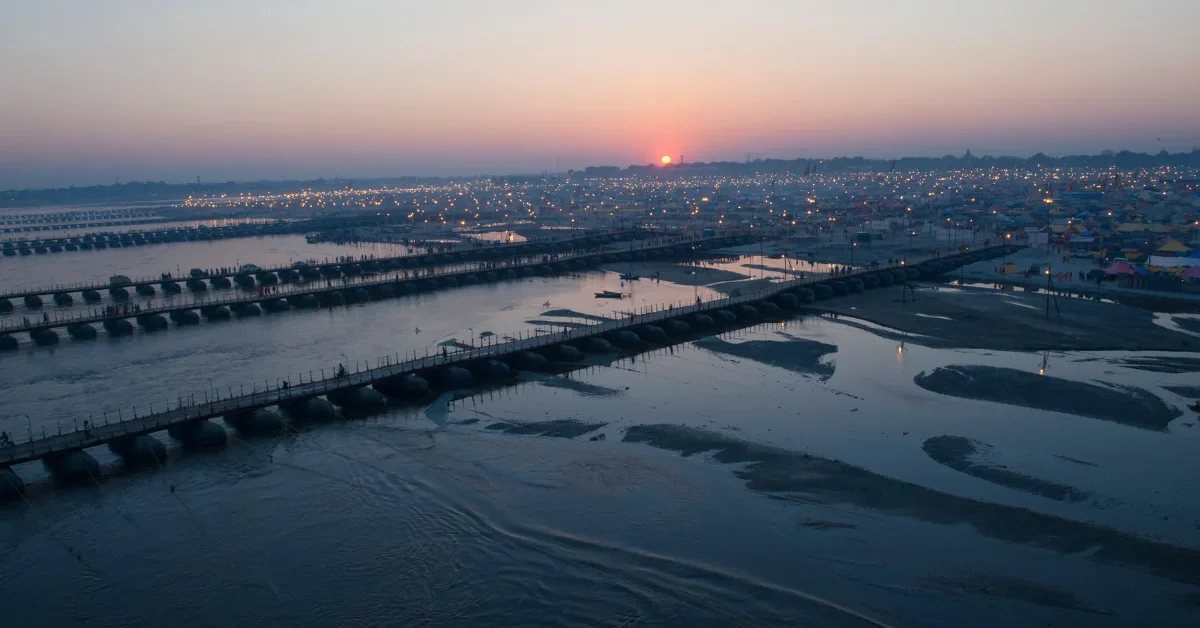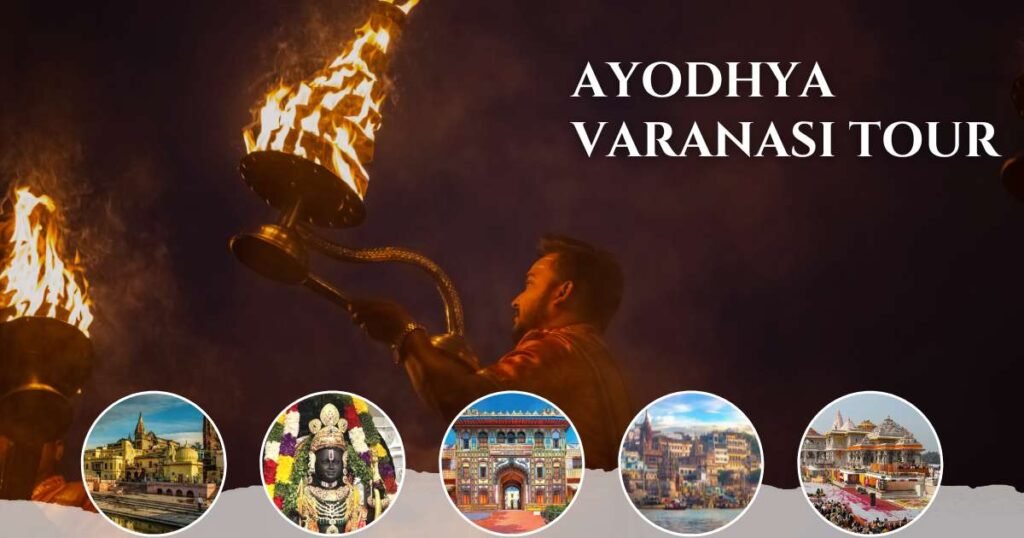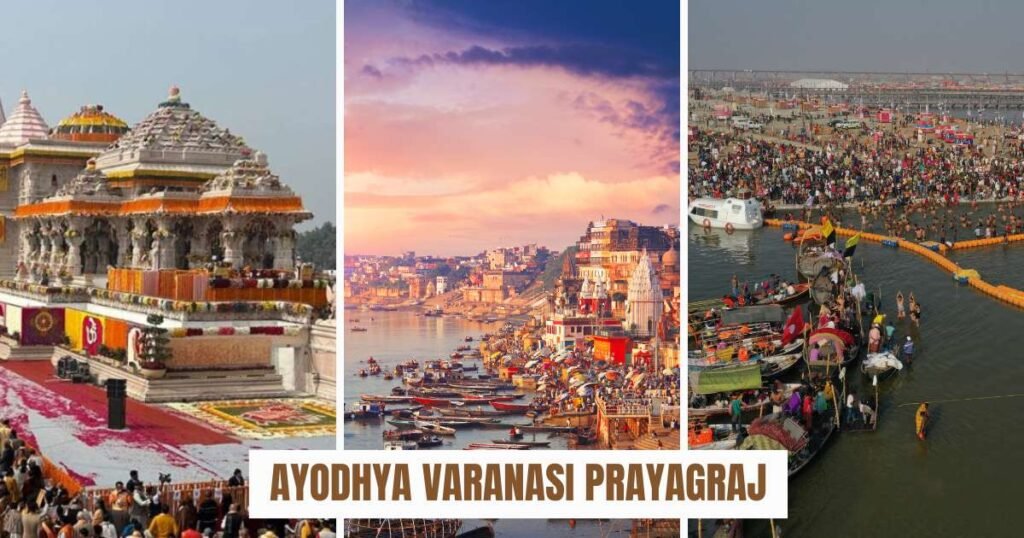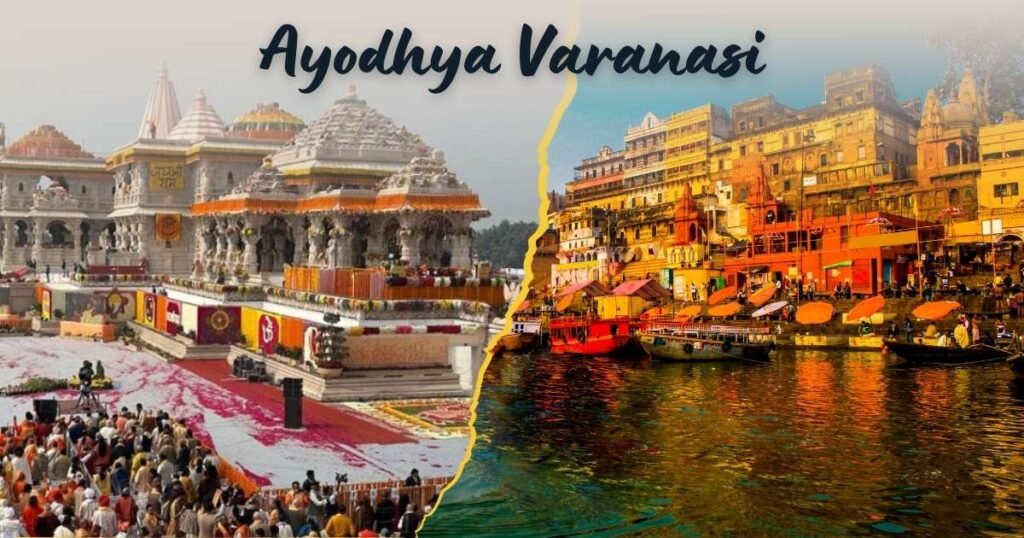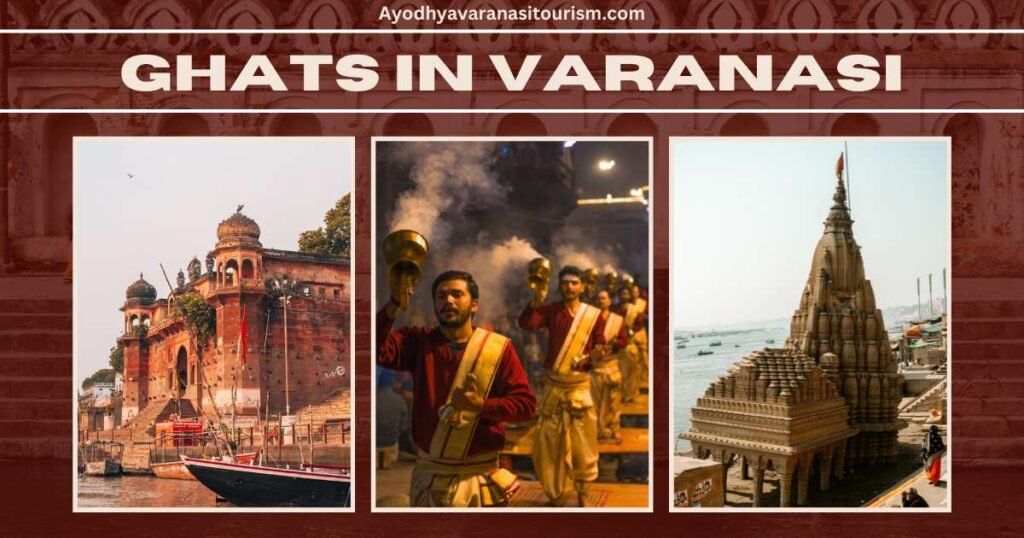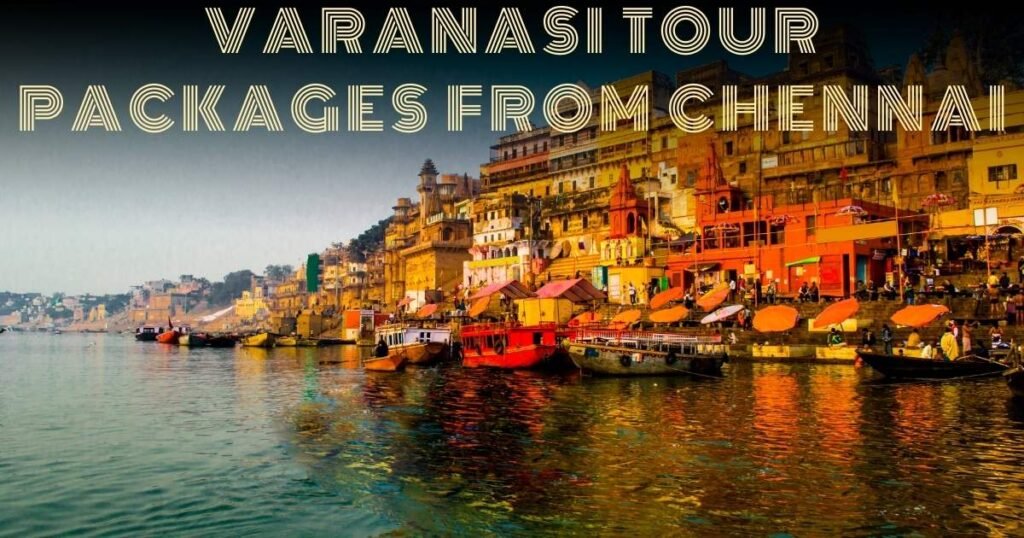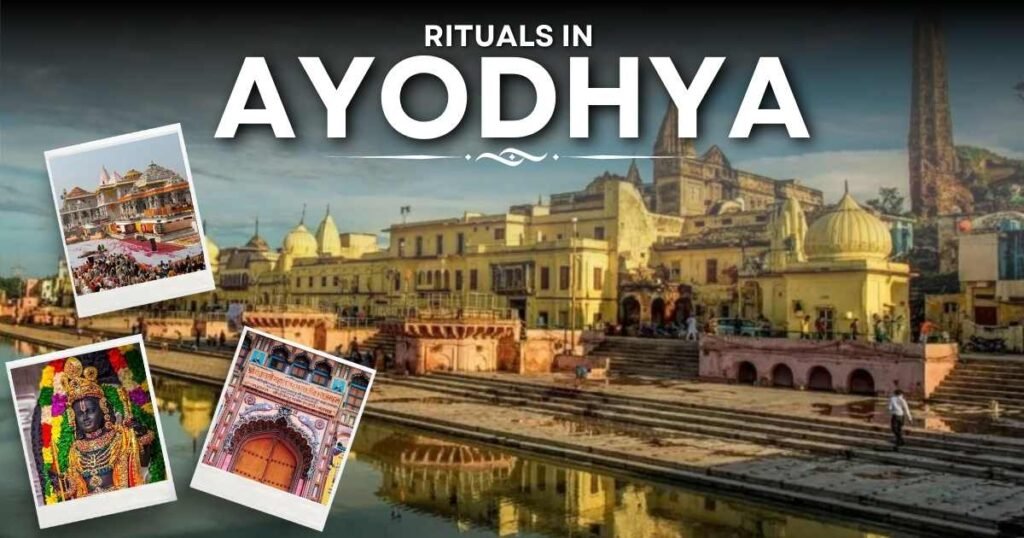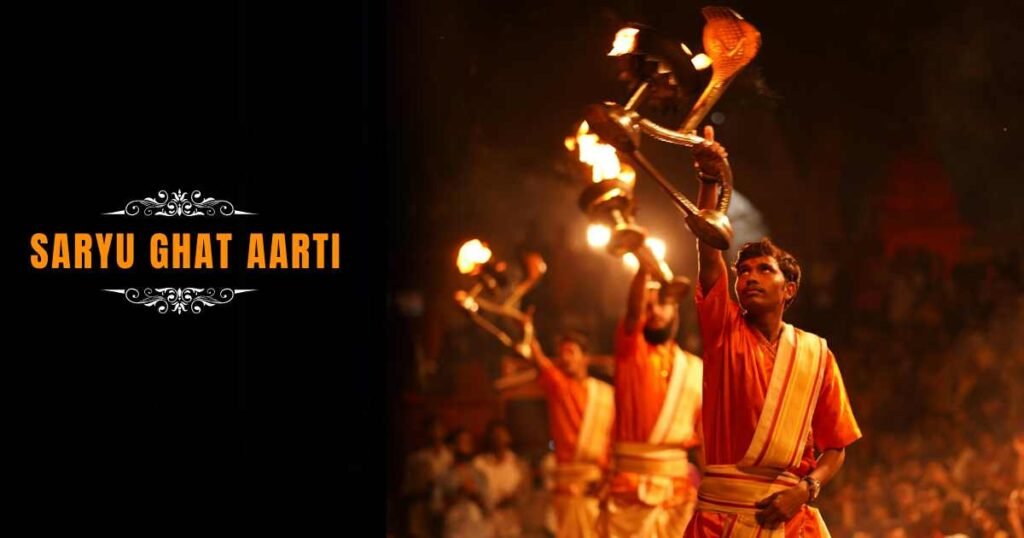There are journeys that the heart remembers long before the feet begin to move.
Journeys that are not made of distance but of faith.
And among them, the path from Varanasi to Prayagraj is one of silence and surrender — where the sound of bells replaces the noise of the world, and the air smells of incense, dust, and devotion.
Every year, when the cold mornings of January arrive and the rivers turn pale and still, Prayagraj begins to wake.
The Magh Mela returns — as it has for centuries, quietly, faithfully, as though time itself bends before this gathering of souls.
And for those who come from Kashi, following the river’s curve and the call of belief, this is not a journey between two cities.
It is a passage between the seen and the unseen.
That is what Ayodhya Varanasi Tourism offers through the Varanasi to Prayagraj Tour Package — not a trip, but a walk through the memory of faith.
Table of Contents
ToggleThe Meaning of Magh Mela
The Magh Mela is not a festival that begins with fanfare; it begins with the river.
Each dawn, as mist floats over the Sangam, thousands gather without hurry, without pride, stepping into the cold water that has washed generations before them.
They pray for release, they pray for peace, they pray because something inside them moves when the river touches their skin.
In Magh Mela 2026, Prayagraj will once again become that quiet ocean of devotion.
Men in saffron robes will sit in meditation beside boys throwing flowers into the flow; women will carry diyas that move gently over the water like drifting dreams.
The sound of conch shells, the smell of ghee lamps, the sight of light meeting river — this is not celebration. It is surrender.
Our Varanasi Prayagraj Magh Mela Tour Itinerary has been created for those who wish not to see, but to feel.
Why the Journey Must Begin in Varanasi
Some roads begin in geography; others begin in prayer.
The Varanasi to Prayagraj Tour Package begins in the oldest city of faith — where every dawn feels like creation itself.
In Varanasi, the Ganga glows with fire from a thousand lamps, and the chants rise like the heartbeat of the world.
It is said that those who leave from here towards Prayagraj carry with them the blessings of the Lord of Kashi — Shiva — and return with the touch of Vishnu from the confluence.
That is why pilgrims have always moved between these two cities — for Kashi cleanses the mind, and Prayagraj purifies the soul.
The journey between them is not long in miles, but endless in meaning.
Varanasi to Prayagraj – The Road Between Two Faiths
The road that connects Varanasi to Prayagraj is calm.
It stretches through small villages and fields that smell of sugarcane and smoke, through temple towns where bells ring even at noon.
You pass by people walking barefoot with cloth bags, faces glowing with dust and devotion.
And in that sight, something within you quiets.
The drive takes around three hours, but the journey takes longer, because the heart slows down to match the pace of the land.
With Ayodhya Varanasi Tourism, you travel gently — no rush, no noise — just the rhythm of the road and the prayer in your chest.
Magh Mela 2026 Pilgrimage Package from Varanasi – 4 Days of Faith
Day 1 – Arrival in Varanasi
Upon arriving in Varanasi, the city that never sleeps but dreams forever. Our representative will greet you at the station or at the airport and get you settled in your hotel room or for further travel. After resting, you can make your way down the stone steps of Dashashwamedh Ghat. Evening will come on, lamps will be placed, and the Ganga Aarti will begin, hundreds of flames dancing like living stars. The air and atmosphere will be charged with spirituality and all in moments you will not know where the river ends and bhakti (devotion) begins.
Day 2 – From Kashi to Prayagraj
Morning in Varanasi begins with chants; morning on the road begins with silence.
After breakfast, you leave for Prayagraj.
The journey is smooth, filled with pauses where the earth still smells of winter.
On arrival, you go straight to Triveni Sangam, where three rivers — Ganga, Yamuna, and the invisible Saraswati — meet in quiet eternity.
Here, you take the Magh Snan, the sacred bath that washes away weariness more than sin.
The rest of the day flows between the Hanuman Temple, small shrines, and the camp where pilgrims rest.
At night, the river glows again, holding reflections of a thousand lamps.
Day 3 – The Living Spirit of Magh Mela
The morning mist dissipates in a hurry, exposing tents, fires, and faith.
Wander among the Akharas, where sadhus practice meditation with closed eyes but opened senses.
The crowd becomes a hum like the river itself- constant, never-ending, moving.
Visit a temple nearby and watch rituals take place while interviewing pilgrims who have walked for days to be here.
And then, as the sun sinks toward the horizon, sit next to the water and watch a diya leave, and observe how peace looks while it is moving.
Day 4 – Return to Varanasi
You begin your return journey.
On the way, stop at Vindhyachal Devi Temple, where the goddess watches over travelers who walk between cities of faith.
By evening, you reach Varanasi again.
The same lamps that greeted you now seem different — softer, brighter, closer.
And in that circle of arrival and return, your pilgrimage completes itself.
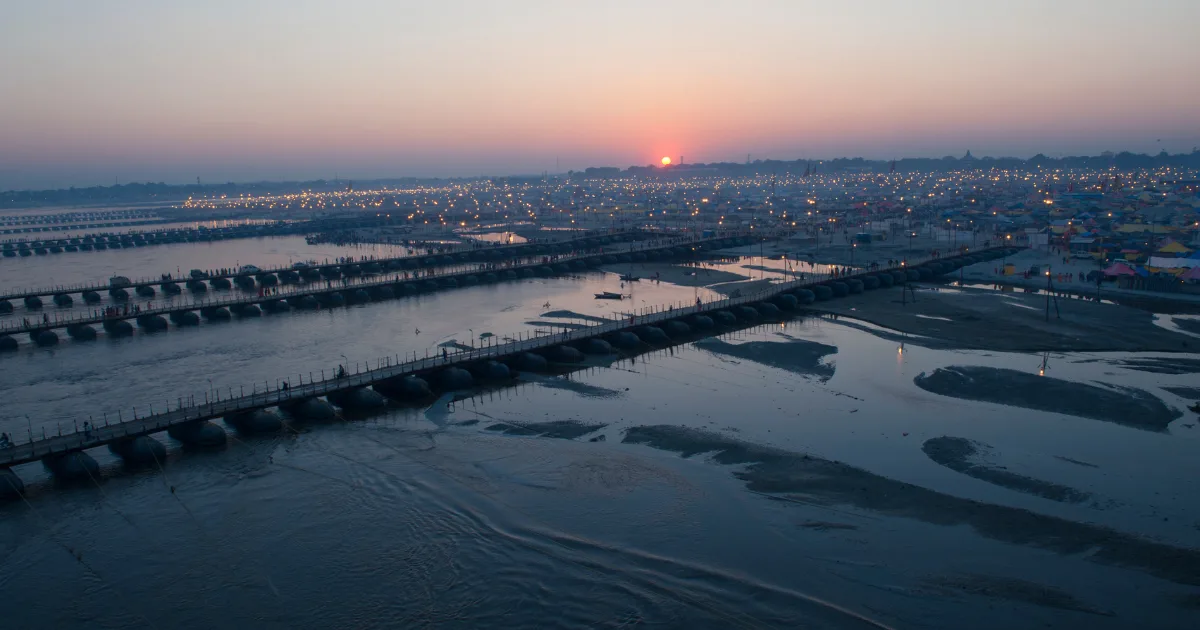
Why Choose Ayodhya Varanasi Tourism
Because we believe that a pilgrimage should never feel managed — it should feel cared for.
We know these roads, these temples, these moments of silence between chants.
Our Varanasi to Prayagraj Tour Package is built not with rush, but with reverence.
- Clean accommodations near the ghats.
- Local guides who understand not just routes, but rituals.
- Comfortable vehicles, humble service, no hidden costs.
- Assistance for every Snan, every pooja, every small need.
We don’t promise luxury. We promise peace.
Best Time to Visit – Magh Mela 2026
The Magh Mela 2026 will begin in January and continue through February, with the Shahi Snan days marking its divine peaks.
Those months hold a different air — crisp, cold, and touched by holiness.
Prayagraj turns into a city of tents and chants, of faith and simplicity.
To walk there, even once, is to walk through living history.
If you have been waiting for a reason to travel, let this be it.
For what better time to visit the confluence than when the rivers themselves are awake with prayer?
FAQs – Varanasi to Prayagraj Tour Package
1. How far is Prayagraj from Varanasi?
It is around 120 kilometers, taking about 3 hours by road.
2. What is included in the Magh Mela 2026 package?
Accommodation, transport, sightseeing, meals, and Snan assistance.
3. When does Magh Mela 2026 take place?
From January to February 2026, with main bathing dates during Shahi Snan.
4. Does the tour cover Ganga Aarti in Varanasi?
Yes, the evening Aarti at Dashashwamedh Ghat is part of the itinerary.
5. Are tent accommodations available in Prayagraj?
Yes, clean and comfortable tents or hotels are provided near Sangam.
6. Is the trip suitable for senior citizens?
Yes, we provide easy-paced itineraries and assistance for elders.
7. What rituals are performed during Magh Mela?
Holy bath at Sangam, pooja offerings, and visits to Akharas.
8. Can I customize my travel plan?
Yes, the itinerary can be adjusted as per your schedule and interest.
9. Are meals included in the package?
Yes, simple and pure vegetarian meals are included.
10. Why choose Ayodhya Varanasi Tourism?
Because we travel with faith, not formality — with devotion, not direction.
In the End
The rivers meet, the crowds fade, and yet something remains.
You stand by the Sangam, watching the water flow away, and you understand — the purpose of a pilgrimage is not to reach somewhere, but to empty yourself enough to receive what the journey gives.
When you return from Prayagraj to Varanasi, you carry no souvenirs, only silence — and in that silence lives a peace that does not end.
That is what Ayodhya Varanasi Tourism offers — not packages, not plans, but pathways.
Because faith, like the Ganga, does not begin or end.
It only flows — and takes you with it.

